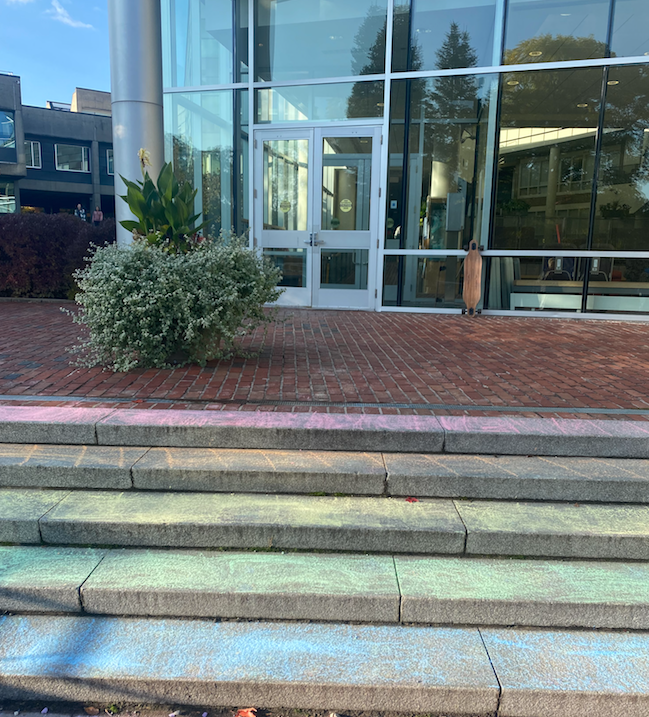
On Tuesday, Oct. 18, students woke up to a campus decorated with rainbow chalk drawings and pride flags lining Martin’s Way bridge. These decorations were set up by the Gender & Sexuality Union (GSU) for their annual “chalk-out” celebrating National Coming Out day. The practice of chalking campus started a couple of years ago with Dylan Badillo ’23’s term as president of GSU during the fall of 2020.
GSU members began decorating the campus at 11 p.m, Monday, Oct. 17. Raymond Ni ’24, a member of the GSU E-Board, noted that they scheduled the chalking event at a time when the campus would be relatively empty. “We wanted it to be unexpected so students could be surprised by the decorations.” In addition to Ni, the other E-board members who organized the event were Ethan McKellop ’25, Aurelie Kaleka ’24 and Vicky Holland ’26.
Ni also shared that “The reason we did the chalking event was that we wanted to spread awareness [for] National Coming out Day. Also, October is LGBTQ+ history month in the United States. It’s a month where we celebrate Queer history and Queer icons.” Ni emphasized the significance of this visibility as his experience has shown that “in the college curriculum LGBTQ+ history is often ignored as well as often ignored in popular culture. We wanted to spread awareness and show people ‘we’re here, and we’re queer.’”
In addition to decorating campus, the GSU organized a swag drop outside of the Days Massolo Center. The drop happened on Tuesday and featured Hamilton PRIDE beanies. Students could also take pictures of themselves with “the coming out door,” a door that was made a few years ago, painted in pride flag colors.
In the future, the GSU plans to fill October with more events to educate students on LGBTQ+ history. Ni wants students to understand, “In order to be better activists and allies, it’s important to recognize this is the history you may not have yet learned.”
Ni reflected on his experience participating in the chalk out, “I felt that it’s such a rewarding experience because this campus may not be the most welcoming to queer people, especially queer people of color and those who don’t fit dominant norms of what queer people should be. Although it doesn’t solve the issue, it shows awareness and brings visibility. We should not be invisible.”
















